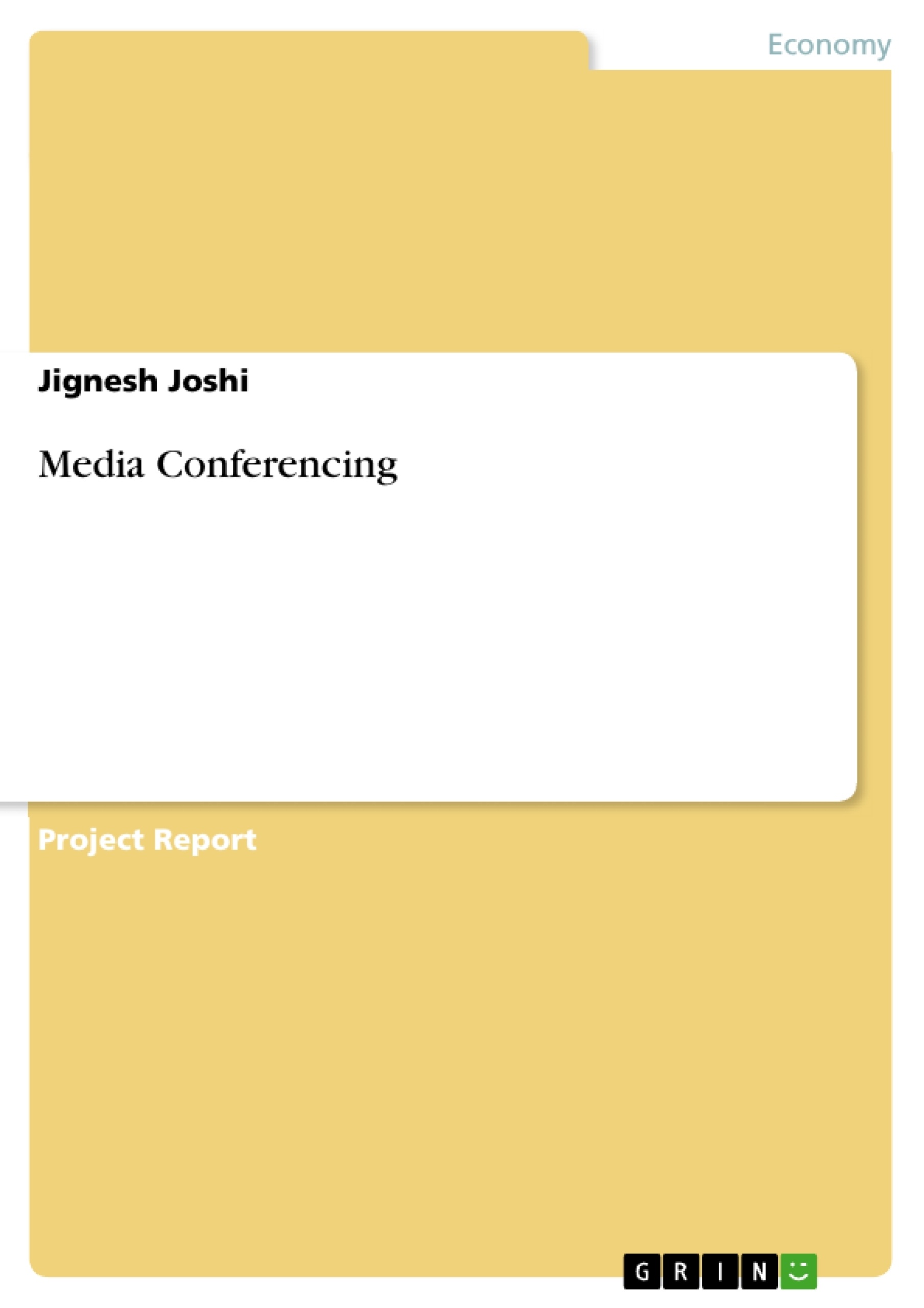Communication is the process by which any message is given or received through talking, writing, or making gestures.
Text chat is the oldest and widest means of communication and it is largely employed over the internet as it requires least bandwidth.
Voice chat has led to a significant increase in distant communications where two or more people from opposite ends of the world can talk almost free of cost. It is replacing the telephony calls as they are expensive.
Video chat is a peer-to-peer communication where recipient and sender interact via video and audio transmissions simultaneously. Video conferencing is a multi-way communication. Recipients can transmit back to the sender. It is a way for presentations or meetings to be "broadcast" or “unicast” over a network (e.g. the Internet) to a select group of
people who may be quite a distance from the actual event. The live video is sent over the network by the means of a streaming program.
Inhaltsverzeichnis
- INTRODUCTION
- CURRENT SCENARIO
- Architecture
- DESIGN
- Methodology
- Packages
- javax.media
- java.io
- javax.swing and java.awt
- java.net
- COMPARISION OF PROTOCOLS
- For Text Data Transfer
- For Audio and Video Data Transfer
- RESULTS AND DISCUSSIONS
- CONCLUSION AND FUTURE WORK
Zielsetzung und Themenschwerpunkte
This project aims to develop a robust and efficient application for media conferencing, addressing the challenges of real-time multimedia data transfer over the internet. The project explores the use of various protocols, including TCP, UDP, and RTP, to optimize data transfer for different media types, such as text, audio, and video.
- Real-time multimedia data transfer
- Comparison of network protocols (TCP, UDP, RTP)
- Efficient media conferencing application development
- Multicast technology for efficient data distribution
- Java programming language and JMF API for multimedia support
Zusammenfassung der Kapitel
The introduction chapter discusses the increasing demand for efficient data transfer over the internet, particularly for multimedia content. It highlights the challenges posed by the large size of images and video sequences, leading to network congestion and degraded video playback quality. The chapter emphasizes the need for appropriate network protocols and topologies to ensure effective data transfer.
The "Current Scenario" chapter delves into the existing challenges of real-time video streaming over the internet. It outlines the characteristics of real-time video, including its variable bit rate and the need for frame periodicity preservation. The chapter also discusses the impact of network delay jitter and random loss on video quality. The architecture section presents a basic server-client model for the media conferencing application, utilizing multicast technology for efficient data distribution.
The "Design" chapter focuses on the methodology and packages used in the development of the media conferencing application. It highlights the use of object-oriented programming with Java, leveraging its network and multi-tasking capabilities. The chapter provides a detailed overview of the key packages used, including javax.media (JMF API), java.io, javax.swing, java.awt, and java.net. Each package is explained in detail, outlining its functionalities and role in the application.
The "Comparison of Protocols" chapter analyzes the suitability of different protocols for text and multimedia data transfer. It compares TCP, UDP, and RTP, highlighting their strengths and weaknesses in terms of reliability, speed, and multicast support. The chapter concludes that RTP is the most suitable protocol for real-time media streaming due to its efficiency and multicast capabilities.
The "Results and Discussions" chapter presents the outcomes of the project, demonstrating the successful implementation of a media conferencing application using Java and the RTP protocol. The chapter highlights the use of multicast addresses to reduce server load and the effectiveness of MBONE architecture for efficient data distribution. It also discusses the use of TCP for secure connections and UDP/RTP for high-speed data transfer.
Schlüsselwörter
The keywords and focus themes of the text include media conferencing, real-time multimedia data transfer, network protocols (TCP, UDP, RTP), multicast technology, Java programming, JMF API, and efficient data distribution. The project explores the challenges and solutions for developing a robust and efficient media conferencing application, leveraging the capabilities of Java and various network protocols.
- Arbeit zitieren
- Jignesh Joshi (Autor:in), 2009, Media Conferencing, München, GRIN Verlag, https://www.grin.com/document/126602
-

-

-

-
Laden Sie Ihre eigenen Arbeiten hoch! Geld verdienen und iPhone X gewinnen. -

-
Laden Sie Ihre eigenen Arbeiten hoch! Geld verdienen und iPhone X gewinnen. -

-
Laden Sie Ihre eigenen Arbeiten hoch! Geld verdienen und iPhone X gewinnen. -

-
Laden Sie Ihre eigenen Arbeiten hoch! Geld verdienen und iPhone X gewinnen.

